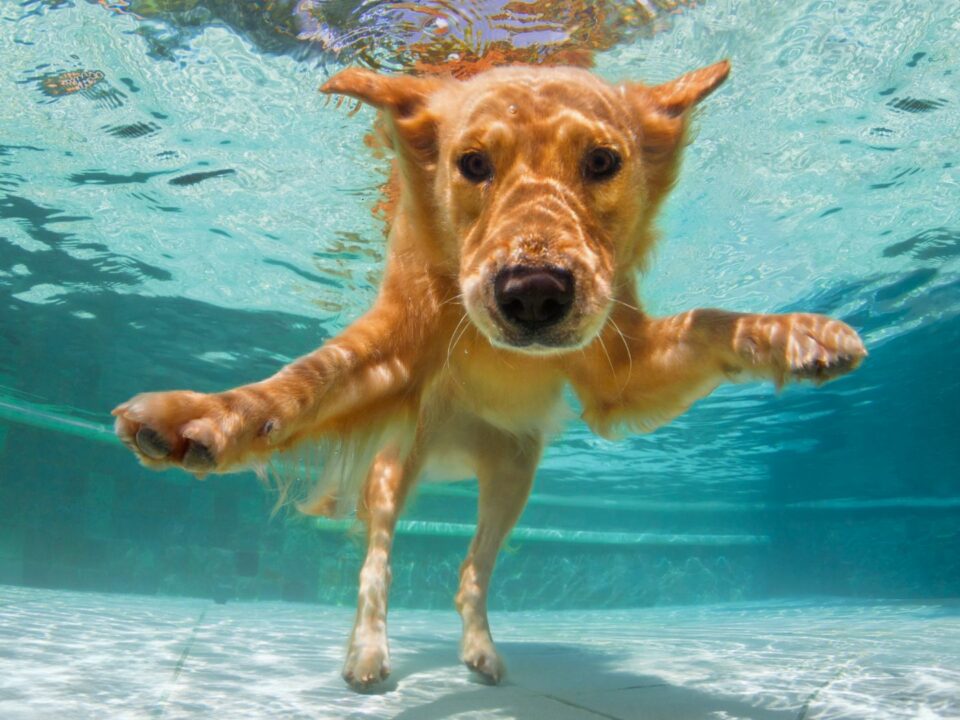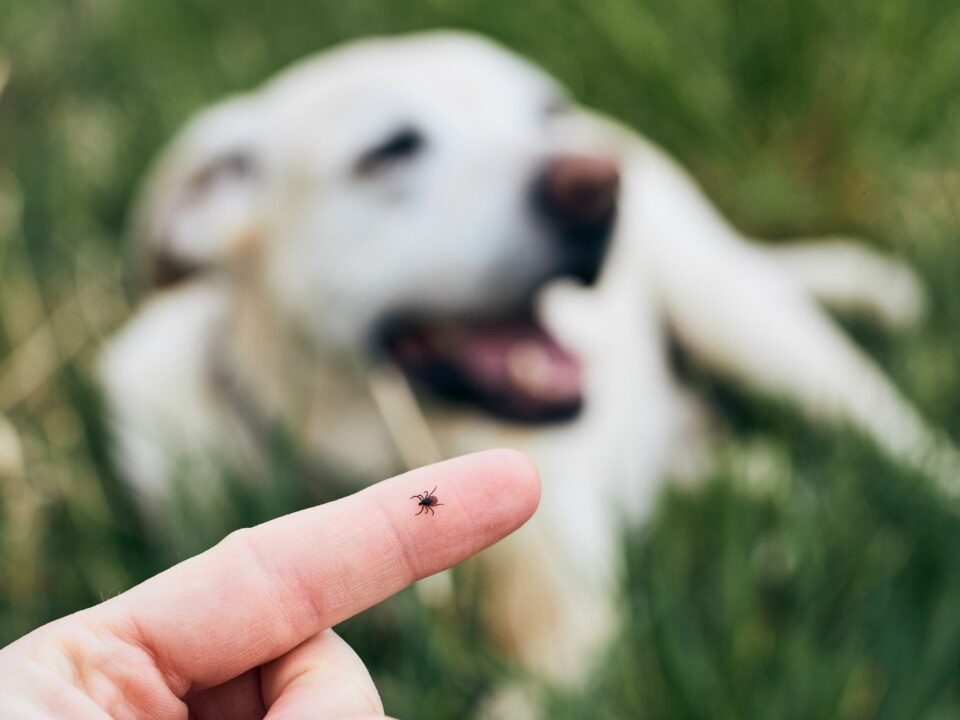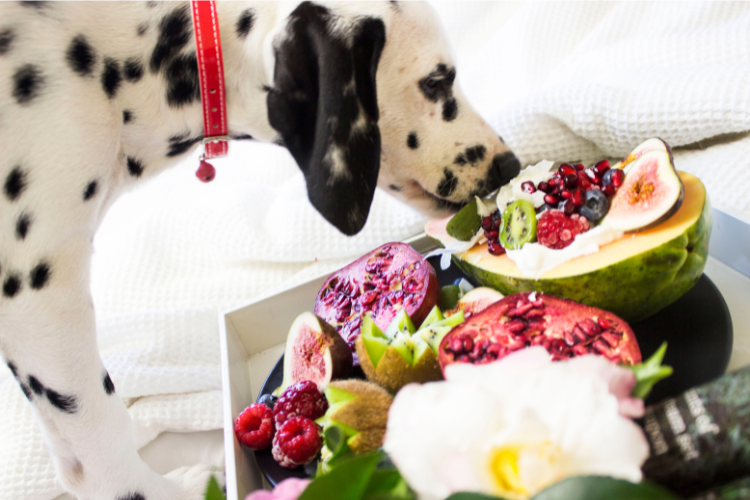
Signs of Feline Immunodeficiency Virus
December 22, 2022
9 Signs your dog may have intestinal worms
April 28, 2023How to Best Care for Your Senior Dog – Age, Diet & Health Tips
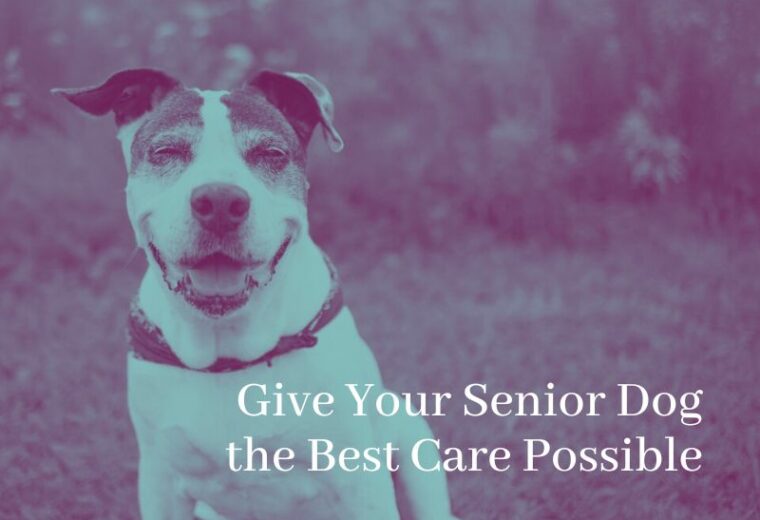
Ageing is a part of life for everyone, human, canine or feline. If you’re lucky, your dog will someday become the senior citizen of the pack.
If your fur baby is becoming grey around the muzzle and droopy in the eyes, how you care for your dog needs to change to ensure they remain comfortable and healthy through their sunset years.
Read on for some tips about taking care of your senior dog, or get in touch with our vets local in Rossmore, New South Wales to discuss your senior dog’s health plan.
What age is considered a senior dog?
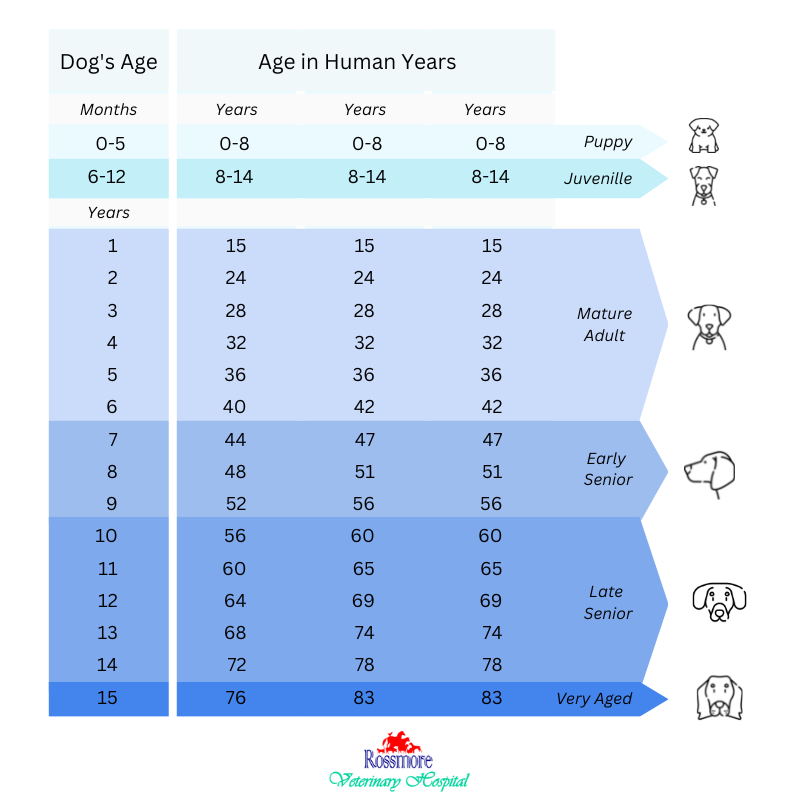
In most cases, when a dog’s age reaches age 7 or above, they are classed as senior dogs. Smaller dog breeds tend to live longer and may not be classified as senior until they reach 11-12 years of age. Larger canine breeds are classified as senior between 7-10 years old.
For more insight into your dog’s age classification, there are a range of dog age calculators you can find online, like this dog age calculator from PetCare.com.au.
Ultimately if your pooch is aged 7 or above, they are considered senior and it’s a good time to re-evaluate their daily health routines.
8 tips for taking care of senior dogs
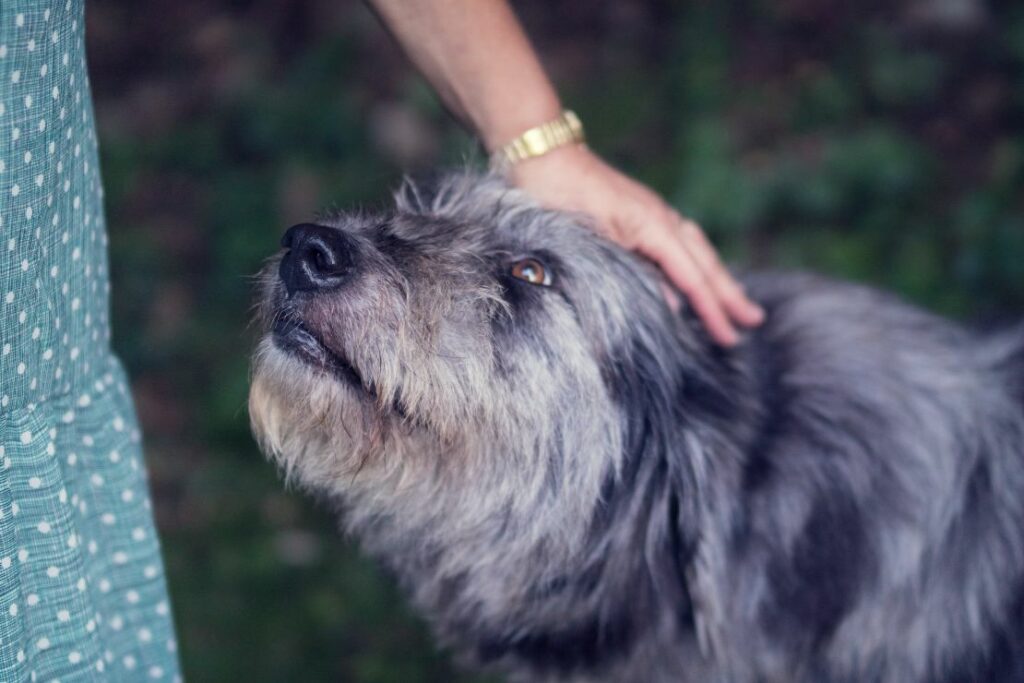
It can be difficult when you begin to witness a decline in sprightliness as your dog ages. However, try to view it as a blessing that your older dog has been in your life for as long as they have.
Just because your dog reaches a certain age doesn’t mean you should expect an immediate change in their abilities or behaviour. However, slowly implementing the following tips will help to prevent nasty surprises and keep your dog’s quality of life consistently great, even as they age.
1. Follow their lead

This is not often heard when it comes to dog behaviour; after all, you spent so long training them to follow yours! However, it’s important not to push older dogs past their limits, so you may need to choose the smaller incline hike or skip the swim for a long walk on the sand.
If they want to have a day in, let them, but don’t be afraid to gently encourage them to stay active. Keep up your usual walking routine as much as possible, as a reassuring daily framework will keep your dog comfortable and happy.
2. Bathe more often

Nobody likes a stinky dog! And this might be one of the first signs that your beloved pet is beginning to feel its age.
Older dogs can have difficulty grooming themselves, meaning you may need to lend a hand with more regular brushings and baths. While doing so, keep an eye out for any strange lumps, bumps, or rashes to present to your vet.
If your dog is experiencing incontinence, regular baths and grooming sessions become even more paramount.
3. Introduce new brain exercises

Mental exercise is always as important as physical for your dog, but even more so when they begin to age.
Keep your senior dog active and entertained with stimulating activities such as puzzle toys, treat scavenger hunts and social interaction. This will help keep their mind sharp and ensure their days are fun.
4. Feed a high-quality diet

Although you may be tempted to start letting your older dog indulge, it becomes more important than ever to maintain a healthy weight during the aging process.
An overweight senior dog can experience inflammation and undue pressure on its organs due to their slower metabolism. Consider talking with your vet about introducing supplements to ensure all your pup’s nutritional needs are met as they age.
5. Pay attention to their cues

Aging dogs can find everyday things such as temperature regulation and mobility difficult, so it’s up to their pet parent to notice subtle signs of discomfort or pain. For example, if your older dog is eating differently, avoiding stairs, not jumping when they usually would, limping or lying down much more than usual, they may need vet attention.
6. Increase their dental care

As dogs age, they are at a higher risk of issues such as gum disease and cracked teeth, which can be incredibly painful and uncomfortable.
Keep your older dogs’ teeth clean by brushing them well with a finger brush and dog-friendly toothpaste, and offer canine dental treats.
Additionally, their vet should perform a good clean at least annually. If you notice bleeding, swelling or signs of dental discomfort, take your elderly pup to the vet for a dental check as soon as possible.
7. Create an accessible home environment

Some breeds begin to lose mobility as they age. This can be upsetting for older dogs if they’ve always enjoyed unrestricted access to everything from cuddling on the couch to climbing stairs.
Take some time to optimise your home for your aging pet, swapping out their dog bed for an orthopaedic or heated option, installing some pet stairs or ramps, and using rugs in the slippery areas of your home. The goal is to allow for their independence while keeping them safe and preventing frustration.
8. Up their vet visits

During their senior years, your best friend will need more regular check-ups with the vet. A check-up will enable your vet to monitor your dog’s baseline, keep an eye on their muscle mass, tartar build-up and weight gain, and allow for early detection of issues such as heart disease, hearing loss, irritated skin, kidney, or liver disease.
Common health problems that affect elderly dogs
- Hearing loss
- Vision loss
- Joint pain
- Cognitive impairment
- Heart problems
- Cancer
- Weight fluctuations
- Incontinence
- Poor kidney function
Hearing loss
As dogs age, so does their tissue, causing varying degrees of hearing loss. Pay attention to ear irritation or when your senior dog misses verbal cues.
Vision Loss
Keep an eye out for a cloudy layer forming over your dog’s eye or irritation around their eyes and ears.
Joint Pain
Joint problems and loss of lubrication between joints (osteoarthritis) are common in senior dogs. Talk to your vet about treatments or diets to support joint health & comfort.
Cognitive Impairment
Senior dogs experience cognitive dysfunction similar to that in aged people with dementia. This can present as confusion, disorientation, getting lost in everyday environments, or a sudden increase in barking and aggression. If you notice any of these issues, get to your vet immediately.
Heart problems
Congestive heart failure occurs when the heart can’t pump blood effectively, causing a build-up of bodily fluid. If your senior dog has difficulty breathing, is coughing, lacks stamina, is vomiting, or is listless, see an emergency vet ASAP.
Cancer
Your older dog may start to get more lumps and bumps. While not all of them are cancerous, older age increases your dog’s risk of developing cancer. Ask your vet to examine any new lumps at regular check-ups and cancer screenings.
Weight fluctuations
Your dog’s weight can influence their overall health and organ function. As they age, their metabolism slows, and they are generally less active. Feed your dog age-appropriate food, do regular walks, and keep an eye on sudden weight gain or loss.
Incontinence
Ageing dogs can experience tummy, muscle and bowel problems leading to incontinence. While vomiting and diarrhea should not be ignored and can be a sign of something more serious, sudden urinary accidents are likely a sign of weakening muscle mass around the bladder. Incontinence may also be a sign of a UTI or even dementia.
Poor kidney function
As your dog ages, its kidneys may begin to lose their function. This can be managed with early detection in routine bloodwork, kidney treatments and good nutrition. Notify your vet if your elderly dog’s water consumption, urination, weight, appetite, and personality change significantly.
Caring for your senior pet according to breed
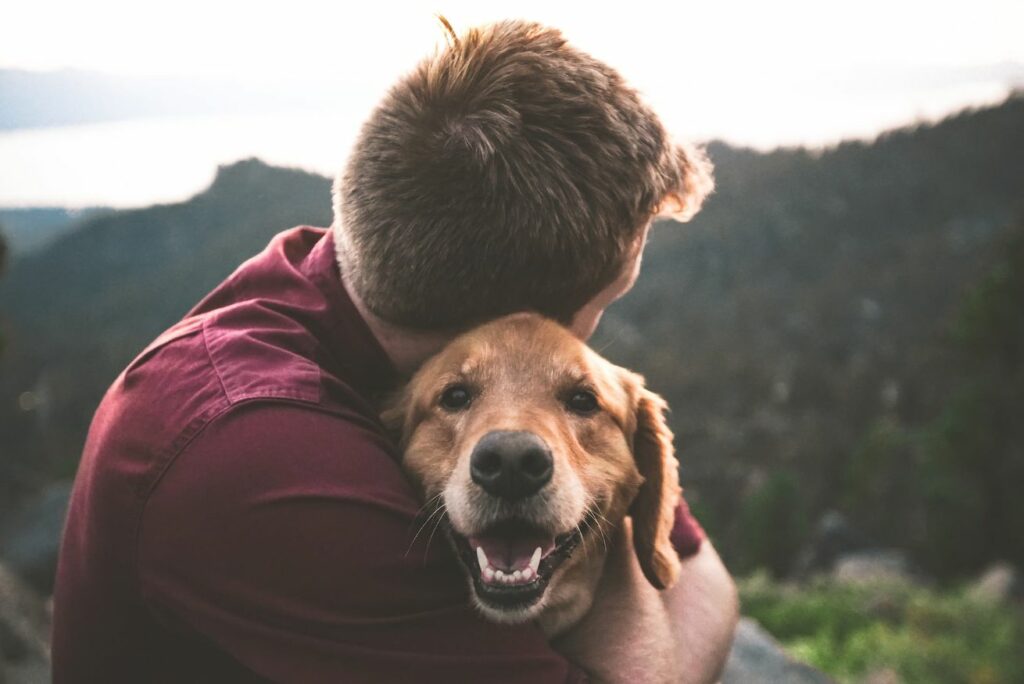
Ageing in dogs differs between breeds, and the way their physical and mental stamina changes over time will be different based on the size of the dog. In addition, advanced years often bring changes to the eyes, ears, skin, organs and cognitive function, and some breeds may experience these changes quicker than others.
Read on to discover the aging profile of your dog.
Small breeds

Small breed dogs don’t generally experience symptoms of aging as early as larger breed dogs. The golden rule of the age of seven remains; however, your small dog could comfortably live to be 10-12+ years.
Your dog’s nutritional needs will be the first accommodation you’ll need to make for a small breed, delivering easily digestible meals with the right ingredients to support their overall health.
The signs of ageing in a small dog breed may include a dry and dull coat, flaky or irritated skin, sudden energy loss, weight fluctuations, joint problems, a loss of muscle mass and tummy problems.
Average/Balanced Breed

Medium or average-sized dogs can have the most varied lifespans, up to a decade in difference. With the organs avoiding the problems of larger breeds and their agility being better than some smaller breeds, your average-sized dog could live up to 20 years. Reaching maturity around 13-15 months, average-sized dogs such as Australian Cattle Dogs have experienced some of the highest longevity on record.
Their diet influences an average or medium-sized dog and should be fed according to your vet’s instructions based on its specific breed. Crossbred dogs generally have a slightly better lifespan than purebreds, based on RSPCA data.
In addition, average-sized dogs benefit from regular exercise, so don’t skip your morning walk to keep their bodies and minds in shape as they age.
Giant Breeds

On average, giant breed dogs have a shorter lifespan than other breeds, at around 12 years maximum. These breeds benefit from preventative medicine, breed-appropriate nutrition, and behavioural welfare.
As your giant fur baby ages, it becomes more important than ever to monitor their behaviour and be intentional with their nutrition. Daily mental enrichment and some modifications to the home may be necessary to aid their aching bones.
Work with your vet to refine the ideal weight for your giant breed, as too much weight gain can harm their organ function. Their mobility may be affected, but many products, such as orthopaedic beds and ramps, exist to make this stage of life more comfortable.
Keep their joint and muscle health up to scratch with short walks, food-stuffed toys, puzzles and ‘sniff journeys’ around the neighbourhood.
Ageing is a part of life, and your pet’s needs, routine and abilities will inevitably change and evolve as they grow. Ensuring they have the best food, regular check-ups, plenty of adventure, and a solid routine is the best way to give your pet a wonderful retirement.
Having the right vet team on your side can be a priceless benefit when caring for an older pet. Contact us to learn more about caring for your ageing dog.

